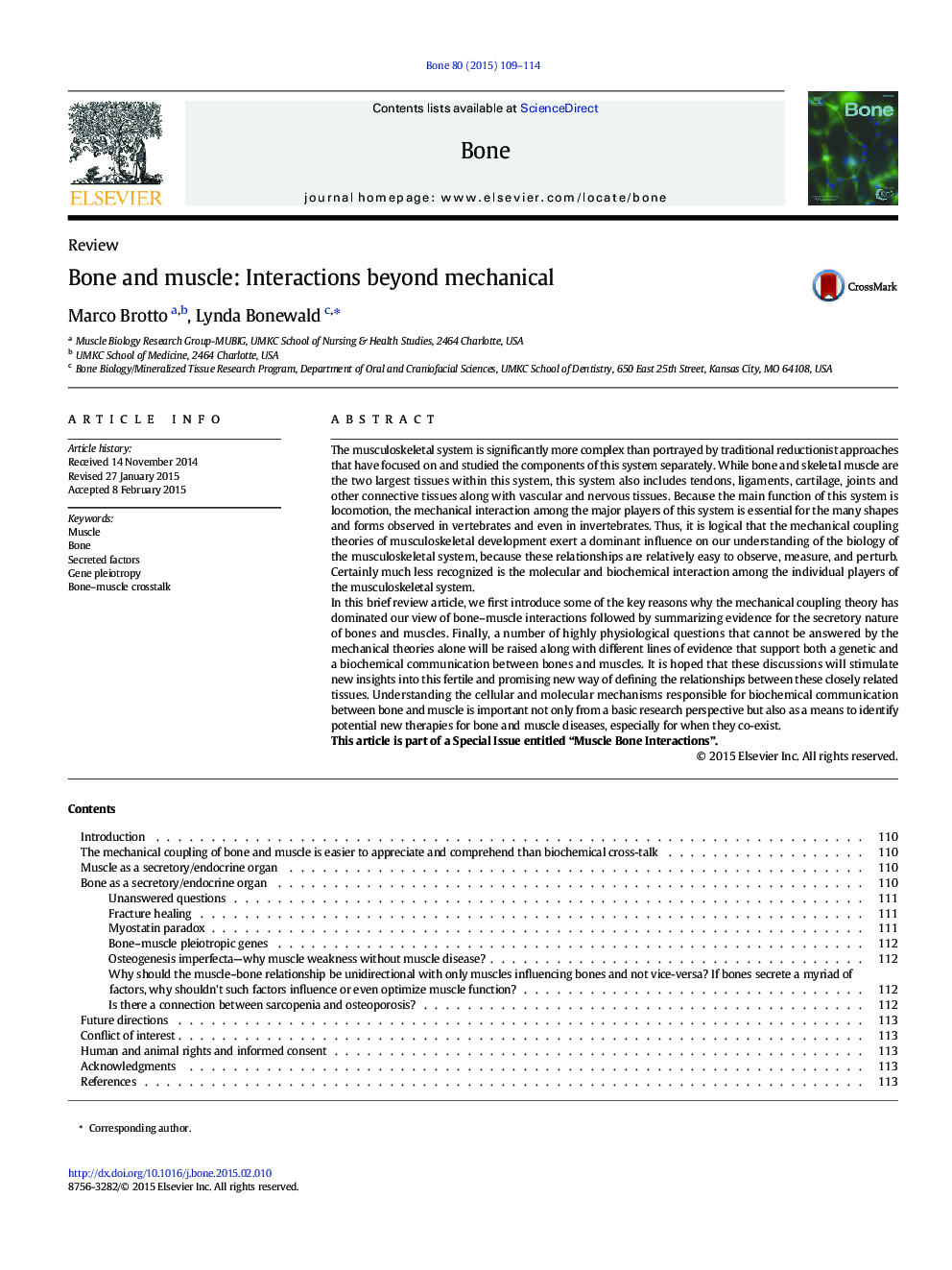| کد مقاله | کد نشریه | سال انتشار | مقاله انگلیسی | نسخه تمام متن |
|---|---|---|---|---|
| 2779154 | 1568139 | 2015 | 6 صفحه PDF | دانلود رایگان |
• The major goal of this review article is to inform regarding muscle–bone crosstalk independent of loading.
• The second goal is to summarize data that demonstrates the endocrine nature of skeletal muscle and bone.
• The third goal is to address questions unanswered by the mechanical coupling theory of muscle bone crosstalk.
The musculoskeletal system is significantly more complex than portrayed by traditional reductionist approaches that have focused on and studied the components of this system separately. While bone and skeletal muscle are the two largest tissues within this system, this system also includes tendons, ligaments, cartilage, joints and other connective tissues along with vascular and nervous tissues. Because the main function of this system is locomotion, the mechanical interaction among the major players of this system is essential for the many shapes and forms observed in vertebrates and even in invertebrates. Thus, it is logical that the mechanical coupling theories of musculoskeletal development exert a dominant influence on our understanding of the biology of the musculoskeletal system, because these relationships are relatively easy to observe, measure, and perturb. Certainly much less recognized is the molecular and biochemical interaction among the individual players of the musculoskeletal system.In this brief review article, we first introduce some of the key reasons why the mechanical coupling theory has dominated our view of bone–muscle interactions followed by summarizing evidence for the secretory nature of bones and muscles. Finally, a number of highly physiological questions that cannot be answered by the mechanical theories alone will be raised along with different lines of evidence that support both a genetic and a biochemical communication between bones and muscles. It is hoped that these discussions will stimulate new insights into this fertile and promising new way of defining the relationships between these closely related tissues. Understanding the cellular and molecular mechanisms responsible for biochemical communication between bone and muscle is important not only from a basic research perspective but also as a means to identify potential new therapies for bone and muscle diseases, especially for when they co-exist.This article is part of a Special Issue entitled “Muscle Bone Interactions”.
Journal: Bone - Volume 80, November 2015, Pages 109–114
